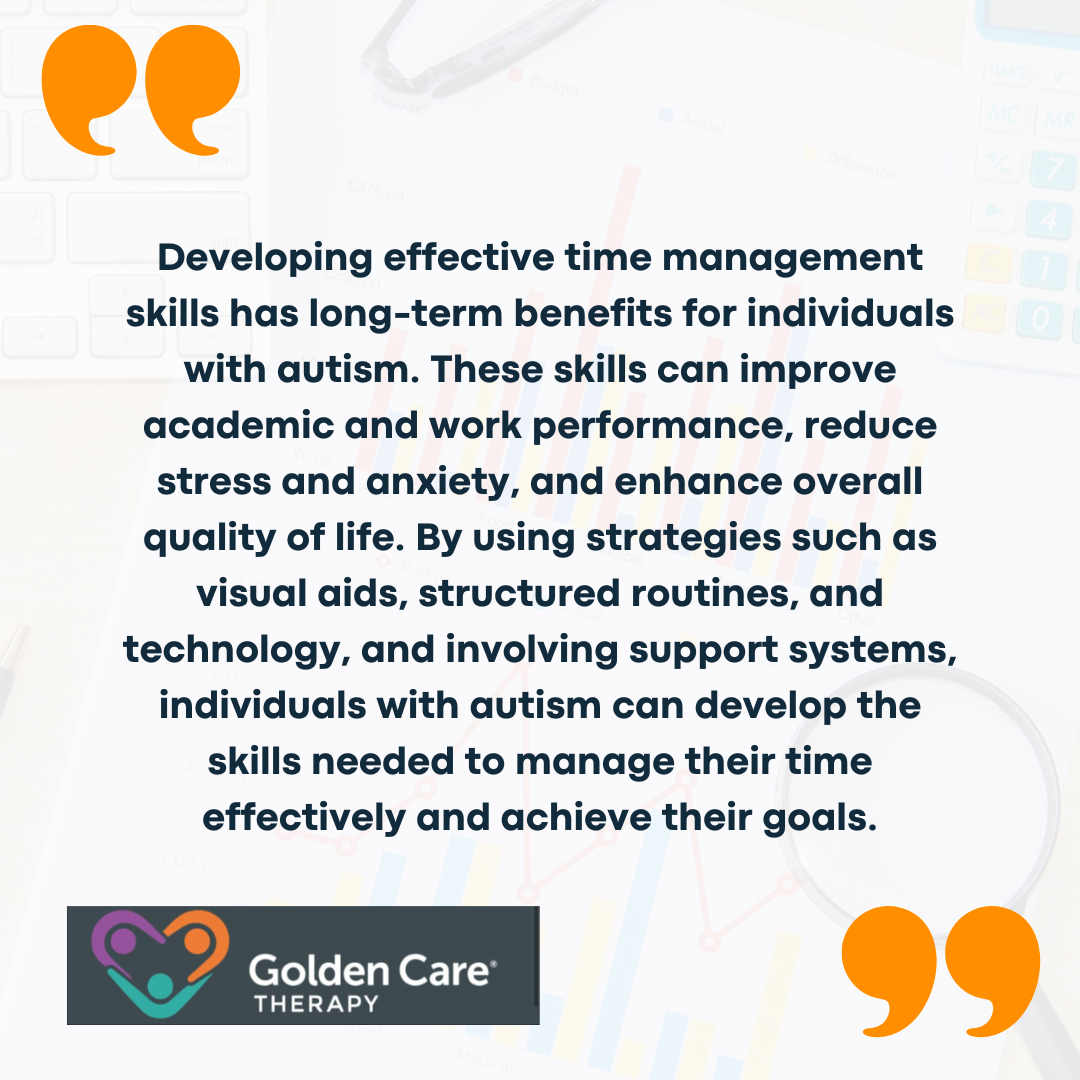Time management is a crucial skill for everyone, but it can be particularly challenging for individuals with autism. People with autism often have unique ways of processing information and organizing their thoughts, which can make managing time more difficult.
However, with the right strategies and tools, individuals with autism can develop effective time management skills.

Time Management Challenges in Autism
Before we delve into specific strategies, it’s essential to understand the common time management challenges faced by individuals with autism. One of the primary issues is the difficulty with transitions. Moving from one activity to another can be particularly stressful for individuals with autism. Sudden changes can cause anxiety and disrupt the flow of the day, making it hard to stay on schedule.
Rigid thinking patterns also play a significant role. People with autism often prefer routines and can struggle with unexpected changes. This rigidity can make it difficult to adapt to new schedules or time constraints, leading to frustration and delays in completing tasks.
Executive functioning deficits are another major challenge. Executive functioning involves planning, organizing, and completing tasks. Individuals with autism may have deficits in these areas, making it harder to break down tasks into manageable steps, prioritize activities, and stay focused on long-term goals.

Strategies for Improving Time Management Skills
Despite these challenges, there are many strategies that can help individuals with autism improve their time management skills. These strategies often involve visual aids, structured routines, and technology to support planning and organization.
Using Visual Aids
Visual aids can be extremely beneficial for individuals with autism. Visual schedules, for example, provide a clear, concrete way to outline daily activities. These schedules can be in the form of charts, pictures, or digital apps.
By visually representing tasks and the order in which they need to be completed, individuals with autism can better understand and anticipate their daily routines.
Timers and visual countdowns are also useful tools. These can help individuals with autism understand how much time is left for a particular activity so they commit it to memory and know when it’s time to move on to the next task. For example, using a kitchen timer or a visual countdown app can make the passage of time more concrete and less abstract.
Establishing Structured Routines
Structured routines are crucial for individuals with autism. Consistent daily routines provide a sense of stability and predictability, which can reduce anxiety and help individuals stay on track. It’s important to create a routine that includes all necessary activities, such as meals, school or work, leisure time, and bedtime.
While routines should be consistent, it’s also important to build flexibility. This can be done by having “flex time” in the schedule, where the individual can choose from a few different activities. This helps prepare them for unexpected changes and encourages adaptability.
Utilizing Technology
Technology can play a significant role in supporting time management for individuals with autism. There are numerous apps designed specifically to aid in organization and time management.
Apps like “Choiceworks” and “First Then Visual Schedule” allow users to create visual schedules and set reminders for various tasks.
Other general productivity apps, such as “Todoist” and “Trello,” can also be customized to suit the needs of individuals with autism. These apps help break down tasks into smaller steps, set deadlines, and track progress. Using such tools can make managing time less overwhelming and more structured.

Teaching Time Management Skills
Teaching time management skills to individuals with autism involves a combination of direct instruction, modeling, and practice. It’s important to start with basic concepts and gradually build more complex skills.
Direct Instruction
Direct instruction involves teaching specific time management concepts and strategies. This can include explaining the concept of time, how to use a schedule, and the importance of prioritizing tasks. Using clear, simple language and concrete examples can make these concepts easier to understand.
Modeling
Modeling involves demonstrating effective time management skills. Parents, teachers, and caregivers can model these skills by using schedules, showing how to break down tasks, and explaining their own planning processes. Observing these behaviors can help individuals with autism learn and adopt similar strategies.
Practice
Practice is crucial for developing time management skills. Providing opportunities for individuals with autism to practice using schedules, timers, and planning tools in a supportive environment helps reinforce these skills. It’s important to provide positive reinforcement and feedback to encourage continued use and improvement.
Long-Term Benefits of Effective Time Management

Time management is a crucial skill that can significantly impact the lives of individuals with autism. While there are unique challenges, with the right strategies and support, individuals with autism can develop effective time management skills.
With patience, practice, and encouragement, individuals with autism can learn to manage their time effectively, leading to improved independence and a higher quality of life.
Sources:
https://www.healisautism.com/post/teaching-children-asd-time-management-skills
https://www.autismspeaks.org/expert-opinion/autism-time-management
https://www.autismparentingmagazine.com/autism-time-management
https://www.autism360.com/tips-help-people-autism-manage-time



